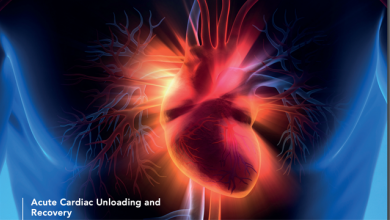Search results
PROMOTED
Author(s):
Nicolas M Van Mieghem
,
Kendra J Grubb
,
David Hildick-Smith
,
et al
Start date:
Mar 26, 2024
Author(s):
Andrea Pacchioni
,
Dimitris Nikas
,
Carlo Penzo
,
et al
Added:
3 years ago
Transcatheter aortic valve implantation (TAVI) and endovascular aortic repair (EVAR) are increasingly being used as therapeutic options for patients with severe aortic stenosis ineligible for surgery and with aortic aneurysm with suitable anatomical features. Despite encouraging results from randomised studies and registries regarding the pursuit of endovascular treatment in selected patients,…
View more
Author(s):
Omar Chehab
Added:
4 years ago
Author(s):
Maarten P van Wiechen
,
Jurgen M Ligthart
,
Nicolas M Van Mieghem
Added:
3 years ago
Minimally invasive procedures such as endovascular aneurysm repair (EVAR), transcatheter aortic valve implantation (TAVI) and implantation of mechanical circulatory support (MCS) are gaining ground on traditional surgery.1–3 These procedures require large-bore access, which is inherently associated with vascular complications and bleeding. Despite the reduction in size of these devices (Table 1),…
View more
Author(s):
Benjamin H Holland
,
Robert J Applegate
Added:
3 years ago
Manual compression has been the gold standard for obtaining haemostasis at the femoral artery access site since being introduced in conjunction with the Seldinger technique in the 1950s.1 However, the limitations of manual compression, including patient discomfort, delayed haemostasis and ambulation and bleeding at the access site despite satisfactory initial haemostasis, have spurred the…
View more
Management of Haemostasis with Combined Use of Vascular Closure Devices and Bivalirudin - A Review
Author(s):
Emanuela de Cillis
,
Giuseppe Sangiorgi
,
Alessandro Santo Bortone
Added:
3 years ago
Article
Author(s):
David Smith
,
Ahmed Hailan
,
Alexander Chase
Added:
3 years ago
Radial vs Femoral Access
In recent years several large registries and randomised controlled trials have demonstrated a mortality benefit for trans-radial over trans-femoral percutaneous coronary intervention (PCI), likely mediated by reduced bleeding complications.1–4 Building on the pioneering Japanese experience, the advent of the hybrid algorithim approach, coupled with innovative new…
View more
Author(s):
Mohamed Abdel-Wahab
Added:
2 years ago
In this short summary interview, Dr Mohamed Abdel-Wahab (Heart Center Leipzig, University of Leipzig, DE) talks about the findings of the CHOICE-CLOSURE trial. The randomized trial investigated the plug-based versus suture-based large-bore vascular closure.
Discussion points:
1. Importance of this study
2. Study design and patient cohort
3. Key findings
4. Impact on practice
5. Next steps
…
View more
Author(s):
Benjamin H Holland
,
Robert J Applegate
Added:
3 years ago
Abstract
Femoral access remains a vital route for many cardiac and non-cardiac procedures, including those involving the use of large delivery systems. In the common femoral artery access is extremely important to minimise complications and optimise use of closure devices. Dissatisfaction with haemostasis achieved by manual compression stimulated development of VCDs that provide quick and…
View more
Overcoming the Challenges of the Transfemoral Approach in Transcatheter Aortic Valve Implantation
Author(s):
Stephane Noble
,
Marco Roffi
Added:
3 years ago
Article












